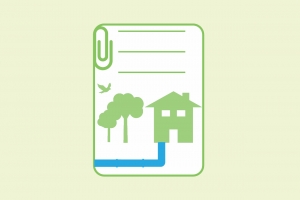Central and Gippsland Region Sustainable Water Strategy
What is a Sustainable Water Strategy?
– Sustainable Water Strategies (SWS) set the policy direction and outline actions for securing a region’s long-term water supplies to protect the jobs, farms, ecosystems, communities and the Traditional Owners that rely on them.
– There are three Sustainable Water Strategies in Victoria. Each one identifies threats to water availability and water quality, and proposed policies and actions to help water users, water corporations and catchment management authorities (CMAs) manage and respond to those threats over the next 50 years.
– The Strategies are developed through a mix of stakeholder and community input, subject matter expertise, modelling and forecasting.
– A key consideration that has informed the development of this SWS is that it remains flexible and adaptable to changing circumstances, such as climate change, population growth and water availability.
– This is the first SWS with a documented implementation plan that has included opportunities for ongoing conversations with the community and key stakeholders throughout the implementation of actions.
– The Department of Environment, Land, Water and Planning will lead the Strategy’s implementation in partnership with the water sector, Traditional Owners and the community. This includes overseeing the delivery of actions, annual reports, and a five-year mid-point, assessment. A major review of the Strategy will be completed after 10 years.
Why do we need a Sustainable Water Strategy?
– Victoria is facing a future with a drying climate which means less water flowing into rivers, and less water captured in water storages and dams.
– With forecast drier conditions and a growing population, coupled with the underlying trend of declining water storage levels, the Central and Gippsland region’s water supplies will need to double in the next 50 years to manage these challenges.
– Collaboration was key in the development of the CGRSWS. The Victorian Government partnered with Traditional Owners and the water sector, while working closely with key stakeholders and community groups to develop the final CGRSWS.
– We are committed to managing Victoria’s water for communities, rivers and wetlands, farmers, industries, tourism and partnering with Traditional Owners. That’s why the Central and Gippsland Region Sustainable Water Strategy is important.
– Investing in the health of our rivers and waterways is particularly important to the economic, social, and environmental future of our cities, suburbs and towns.
– Water has a cultural and spiritual importance to Traditional Owners. Being able to own and manage water strengthens the health, wellbeing and economic livelihoods of Traditional Owners and provides benefits for the wider community.
– Through working in partnership with Traditional Owner corporations, the Victorian Government is aiming to improve water management and the health of Country for now, and future generations.
– Keeping water bills affordable and easing cost living pressures is at the centre of all decision on the region’s future water supplies.
– The planned and incremental approach to investments in water supplies set out in this Strategy will help to keep water bills affordable and prices as stable as possible.
– The Victorian Government has developed the CGRSWS for the sustainable management of Victoria’s water resources as:
– Melbourne and Geelong could face shortfalls and severe water restrictions this decade.
– Gippsland towns such as Warragul and Drouin already rely on temporary access to water from Tarago reservoir to avoid water restrictions, because local demand exceeds local supply.
– Farmers need a reliable water supply in order to continue meeting demand for their products for generations to come.
– Rivers need more water to support native fish, platypus, and other species, and for tourism and recreational activities such as fishing, boating, and kayaking.
– Traditional Owners have cultural, spiritual, and economic connections to land, water and resources but they have been left out of water planning, management and ownership, and this needs to be remedied.
– Planning will start on a portfolio of near-term options to ensure that new water supplies are ready when they are needed. A Water Grid Plan will be published and regularly updated to identify, track and progress urban water supply options that are regionally significant.
Why now?
– Long-term water security is critically important, and while individual seasons or years may see high rainfall – such as the current La Nina weather pattern – the longer-term trend of warmer and drier conditions is forecast to continue.
– While we are not in an immediate crisis, we need to start planning now so we have time to adapt to the changing climate through an affordable, incremental transition.
– By planning the move now to more manufactured and climate-resilient water supplies, it ensures that the transition won’t leave a burden on the next generation, or water users competing against each other.
– We need to plan while our storages are in a healthy position about the best ways to meet our future water needs, safeguard our quality of life, and our economic prosperity.
– We need to grow our water supplies as our population grows, and we need to invest in new climate-resistant water supplies which don’t rely on rain, including desalination (for drinking and everyday use) and recycled water (for non-drinking uses like watering crops or sporting fields and for industry).
– Planning will start on a portfolio of options to ensure new water supplies are ready when they are needed.
– The planned and incremental approach to investments in water supplies set out in this Strategy will help to keep water bills affordable and prices as stable as possible.
Central and Gippsland Region Sustainable Water Strategy - Actions
– This Strategy outlines our priorities for water savings and investing in more manufactured water supplies to meet our water needs and free up river water to enable the return to the environment and to Traditional Owners.
– Water efficiency will continue to be a focus to help everyone to use water efficiently, reduce demand and save money on water bills. A new Target 150 campaign will encourage Melburnians to reduce their water use to 150 litres per person per day.
– The region’s water supplies may need to double over the next 50 years and this will be achieved through greater use of manufactured water – desalination water, fit-for-purpose recycled water and treated stormwater.
– While individual seasons or years may see high rainfall, the longer-term trend of warmer and drier conditions will continue meaning we need to plan now while our storages are in a healthy position about the best ways to bring on new manufactured water supplies to meet our future needs and safeguard our quality of life and economic prosperity.
– Water will be moved around Victoria’s water grid to meet the immediate priorities of some of the region’s fastest growing areas such as Geelong, Warragul and Drouin, and flow-stressed rivers including the Moorabool Yulluk (Moorabool River).
– Water will be returned to Traditional Owners and their role in water resource planning and management will be strengthened. This recognises their deep cultural connection to water and their exclusion from water ownership and management since colonisation.
– Farmers will be supported to adapt and grow their businesses in an increasingly dry climate through water efficiency advice, incentives, and investments and through greater access to recycled water and treated stormwater.
– Over the next 10 years a total of up to 99,500 megalitres of water will be returned to the environment in major rivers across the region. This will support priority environmental outcomes such as the survival of native fish and platypus and help sustain river flows during summer.
– A suite of complementary investments in remediation works or infrastructure, such as fishways, will help to boost waterway health.
– Planning will begin on a portfolio of near-term, regionally significant water supply options so that new urban water supplies are ready as needed and incremental investments will help bills remain stable.
The plan
– The role of the Central and Gippsland Region Sustainable Water Strategy (the Strategy) is to set policy directions and outline actions for securing the region’s long-term water supplies to protect the jobs, farms, ecosystems, communities and Traditional Owners that rely on them.
– The Strategy lays the foundations for a climate-resilient future that delivers social, economic, cultural and environmental benefits for the region.
– Building new dams isn’t the solution because, in the longer-term, there won’t be enough rain to fill them.
– As our climate becomes increasingly dry, and river water becomes scarcer, the region must reduce its reliance on rivers and transition to using more manufactured water such desalinated water, fit-for-purpose recycled water and treated stormwater.
– To meet the region’s water needs under a drying climate we need to:
– Use water more efficiently to save water, energy and the environment.
– Transition to use more manufactured water supplies, including desalination, fit-for-purpose recycled water and treated stormwater.
– Return water to Traditional Owners, who have long been excluded from water ownership and management decisions.
– Return water to the environment to keep rivers healthy for the species and plants that rely on them and so we can enjoy them.
– Support farmers to increase their climate resilience
Download a copy:
Central and Gippsland Region Sustainable Water Strategy
Read the Media Release here – Delivering Water Security For Our Future-1


